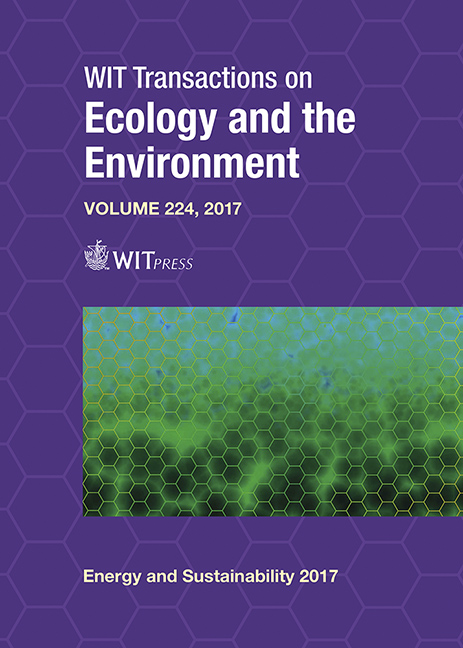VALORIZATION OF WASTE FROM AGRO-INDUSTRY USING THERMO-CHEMICAL TREATMENTS
Price
Free (open access)
Transaction
Volume
224
Pages
13
Page Range
425 - 437
Published
2017
Paper DOI
10.2495/ESUS170401
Copyright
WIT Press
Author(s)
ADELITZA STRUBINGER, JOUSSIE OYOQUE, VALERIA GONZÁLEZ, JULIA GUERRA
Abstract
The increasing generation of solid waste and the interest in renewable and alternative energies has become goals in recent years. The objective of this work was to apply thermochemical conversion processes such as pyrolysis, and hydrothermal conversion (HTC and HTL) into waste from the industry such as the coffee husk (CH), and orange peel (OP) in order to determine their performance towards the production of biocarbon, distribution of organic liquid products, as well as characterization of the bio carbon, obtained. Pyrolysis treatments were carried out with a rapid heating ramp up to 500°C, HTC at 250°C, and HTL at 280°C for 4 hours in triplicates for each biomass. The highest bio carbon yield for OP was obtained by HTC with 36% w/w and for CH the pyrolysis with 40% w/w. The biocarbon obtained from the OP by pyrolysis has a high potential as fuel with a higher heating value (HHV) of 26,3 MJ/kg. On the other hand, in the CH processed by HTC and HTL reported HHV values of 23 MJ/kg. The processing by HTC and HTL favours the formation of biocarbon with high iodine and methylene blue (MB) indices compared to a commercial carbon, for the OP the values obtained are: 343 and 416 mg I2/g, and 174 and 188 mg MB/g whereas for CH 432 and 427 mg I2/g, and 264 and 173 mg AM/g. In relation to liquid organic products, the processing of OP induces the formation of organic compound fractions in the gasoline and diesel range (GRO+DRO) with values between 75-78% when the heat treatments are employed. For the CH, the highest fraction of GRO+DRO was obtained from the pyrolysis with 81%. The HTC obtained the lowest sulphur content for both processed biomass, where the values did not exceed 0.066% w/w.
Keywords
biomass, pyrolysis, hydrothermal conversion, biocarbon





